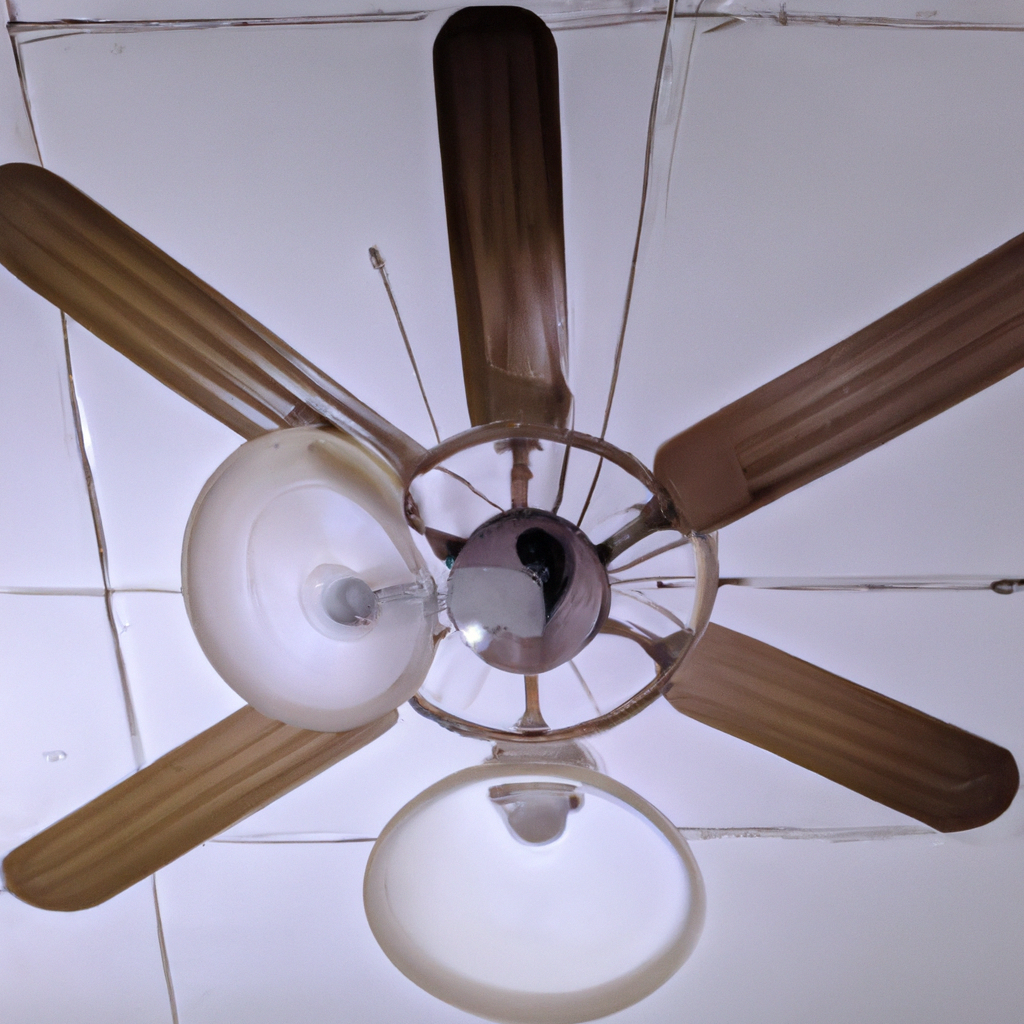The task of disposing of a ceiling fan can be a daunting one, especially if the proper steps are not taken. Knowing how to dispose of a ceiling fan in an environmentally friendly and responsible way is essential for preserving the environment.
The best way to dispose of a ceiling fan is to carefully remove it from the ceiling and check with your local recycling facility to see if they accept ceiling fan components. If not, you can contact your local hazardous waste collection site to find out if they accept ceiling fan components. Make sure to safely package and transport the fan components so they don’t cause harm.
This article will provide a comprehensive guide to disposing of a ceiling fan in an efficient and safe manner while contributing to protecting the environment.
Ceiling fans contain materials that require special disposal and it is important to understand what components must be taken into consideration when disposing of them.
It is also important that the process adheres to local regulations and safety considerations.
Furthermore, there are several methods available depending on the type of fan being disposed and where it will be disposed of.
Finally, understanding the importance of proper disposal as well as having knowledge of different disposal options can help ensure that ceiling fans are disposed of responsibly with minimal impact on the environment. By following this guide, readers should have all they need to properly dispose their ceiling fan while contributing to environmental protection.
Safety Precautions
Before disposing of a ceiling fan, it is important to take safety precautions. Although the task may seem straightforward, dangers can still exist.
To prevent injury or damage, one should always ensure that any power sources are disconnected and the fan is completely shut off before proceeding. Additionally, protective eyewear and gloves should be worn at all times to avoid any potential hazards from debris or dust.

Furthermore, it is essential to use appropriate tools for removing the fan from the ceiling; a screwdriver or wrench may be necessary for unscrewing screws or bolts. Having the right tools can make this task much simpler and less time-consuming.
With proper safety measures in place, one can now proceed with uninstalling the fan from the ceiling.
Uninstalling The Fan
Before uninstalling the ceiling fan, switch off the power supply at the main circuit breaker.
This is an important safety measure that must be taken to prevent any potential injury or electric shock.
After this precautionary step has been taken, locate the screws used to mount the fan and use a screwdriver to loosen them.
Carefully remove the canopy cover of the fan and disconnect all electrical wiring from the fan body.
Gently lower the entire assembly to the floor or workbench for easy access.
Now, unscrew any additional mounting hardware securing the motor housing and carefully separate it from its frame.
At this point, all components of the fan should be easily removed from their mountings.
With all components safely removed from their mountings, it is time to move on to proper disposal methods for these parts.
Proper Disposal Methods
When disposing of a ceiling fan, it is important to do so properly. Improper disposal can result in environmental harm.
The first step is to ensure the fan is unplugged and power has been completely shut off. Once the fan has been safely disconnected from any power source, it should be taken apart into its component parts.
This includes taking off blades and other attachments, removing screws and nuts, and disconnecting any wiring or electrical components. All of these materials must then be disposed of separately.
It is recommended that each component part be recycled whenever possible. Many appliances contain hazardous materials that can be recycled or disposed of correctly through local waste management services or hazardous materials collection centers.
Additionally, there may be recycling centers that accept fans specifically for repurposing or refurbishing them before they are resold or reused in another capacity. Knowing what materials can be recycled and where to take them is an important part of proper disposal methods for a ceiling fan.
Taking advantage of recycling opportunities helps to protect the environment while also reducing landfill waste.
Recycling Opportunities
As highlighted in the previous section, proper disposal of a ceiling fan is essential to prevent environmental contamination. With this in mind, recycling opportunities should be considered as an option for disposing of a ceiling fan.
Recycling centers and retail stores may accept ceiling fans for recycling and some municipalities may offer special collection days for electronics recycling.
Disposing of the fan in this way can significantly reduce its impact on the environment.
By separating out hazardous materials such as lead and mercury, they can be disposed of safely and responsibly in accordance with local regulations.
Furthermore, recycling centers may be able to reuse certain components from the fan or donate it to charity or other organizations that could benefit from its use.
As such, considering these options are not only beneficial for the environment but also create an opportunity to give back to the community.
Conclusion
The disposal of a ceiling fan is an important step in the maintenance of a home. It is not only essential to ensure safety, but also an important part of environmental responsibility.
When disposing of a ceiling fan, it is important to take safety precautions while uninstalling the fan and to properly dispose of or recycle it afterwards.
Safety should be the number one priority when removing any kind of electrical device from the ceiling. To avoid accidents, turn off the power at the circuit breaker before beginning work on the fan.
After ensuring that power is completely cut off, use caution when removing the fan from its mount. Carefully unscrew all screws holding the fan securely in place, and then slowly lower it down from the ceiling.
Once removed from its mount, proper disposal methods should be taken into account. If possible, donate or sell a working fan instead of disposing it directly into a landfill.
If this is not possible, contact local waste management services for information on how to safely and legally dispose of an old ceiling fan. Additionally, some locations offer recycling opportunities for ceiling fans through scrap metal yards or electronic recyclers who can repurpose certain components used in these devices.
Disposing a ceiling fan requires knowledge and awareness about environmental responsibility and safety practices which are essential steps in maintaining a safe and sustainable home.
By taking these two elements into consideration when disposing of a ceiling fan, one can ensure that they are doing their part to protect their family as well as reduce their environmental impact.




